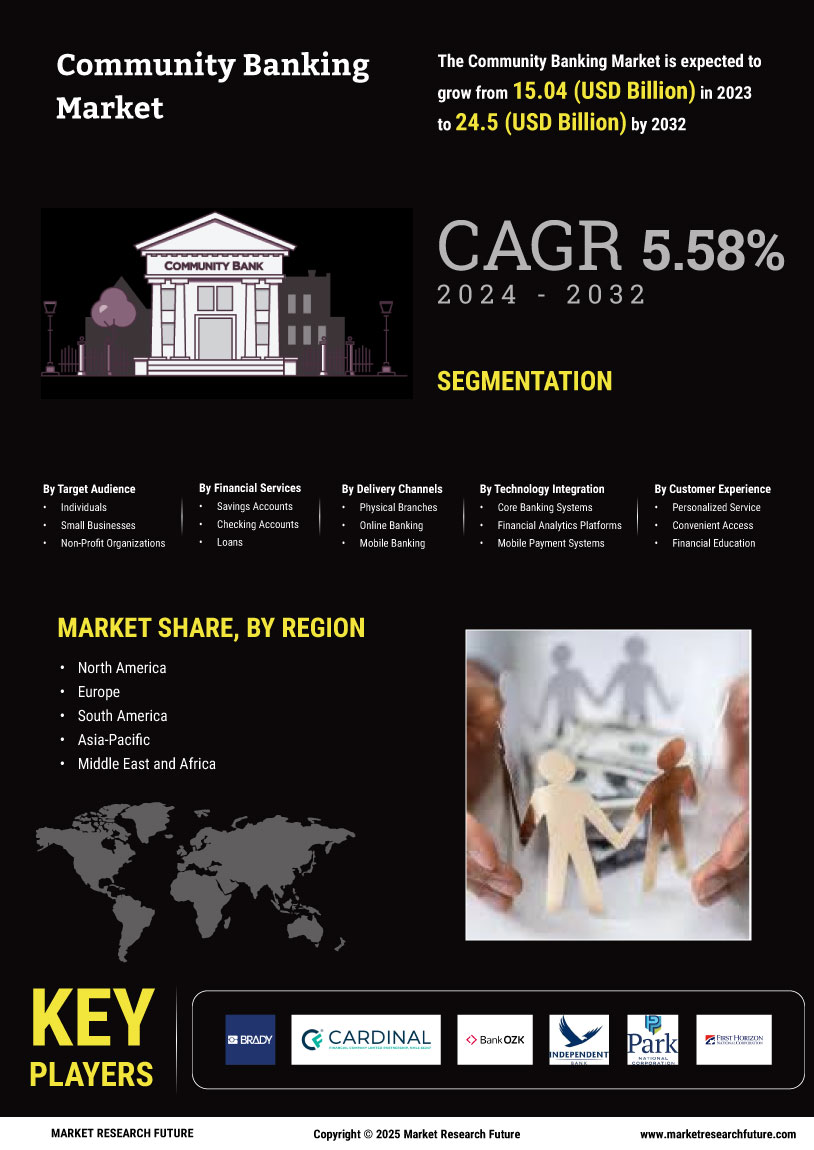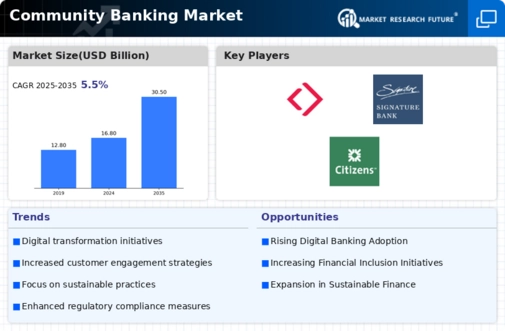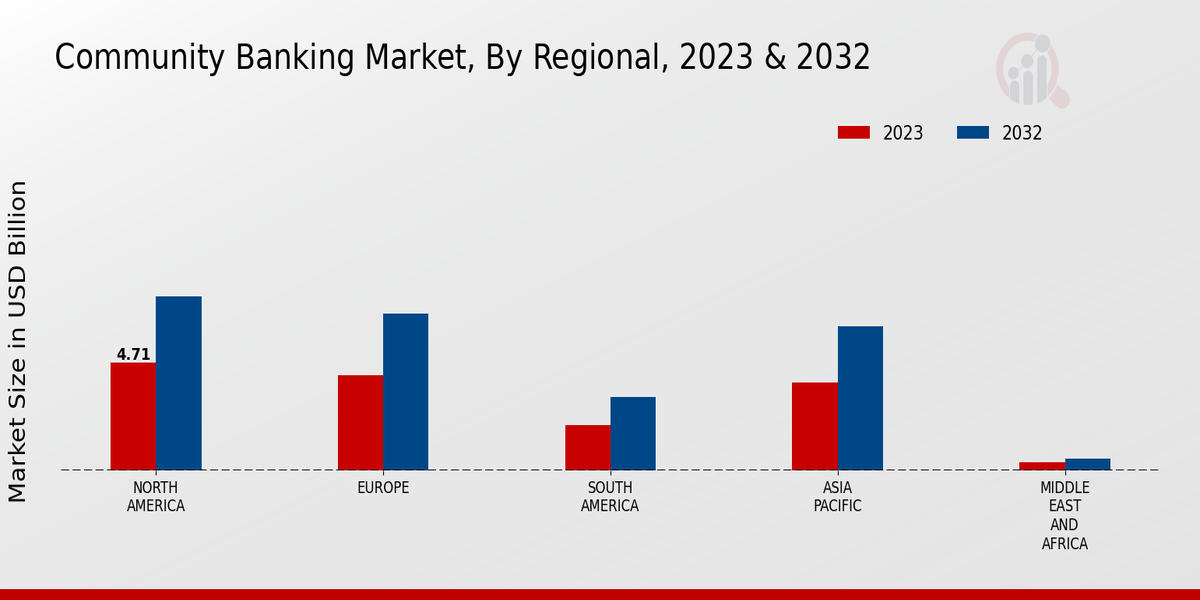Community Banking Market Summary
The Global Community Banking Market is projected to grow from 16.76 USD Billion in 2024 to 30.46 USD Billion by 2035.
Key Market Trends & Highlights
Community Banking Key Trends and Highlights
- The market is expected to witness a compound annual growth rate of 5.58 percent from 2025 to 2035.
- By 2035, the market valuation is anticipated to reach 30.5 USD Billion, indicating robust growth.
- in 2024, the market is valued at 16.76 USD Billion, reflecting a strong foundation for future expansion.
- Growing adoption of digital banking solutions due to increasing consumer demand is a major market driver.
Market Size & Forecast
| 2024 Market Size | 16.76 (USD Billion) |
| 2035 Market Size | 30.46 (USD Billion) |
| CAGR (2025-2035) | 5.58% |
Major Players
Customers Bancorp, Inc., Fulton Financial Corporation, Brady Bancorp, Inc., Cardinal Financial Corp., Bank OZK, Independent Bank Corporation, Park National Corporation, Signature Bank, First Horizon Corporation, Greenwood Bancorp, Inc., Independent Bank Group, Inc., Associated BancCorp, Old National Bancorp, Citizens Financial Group, Inc., Synovus Financial Corp., Community Trust Bancorp, Inc.














